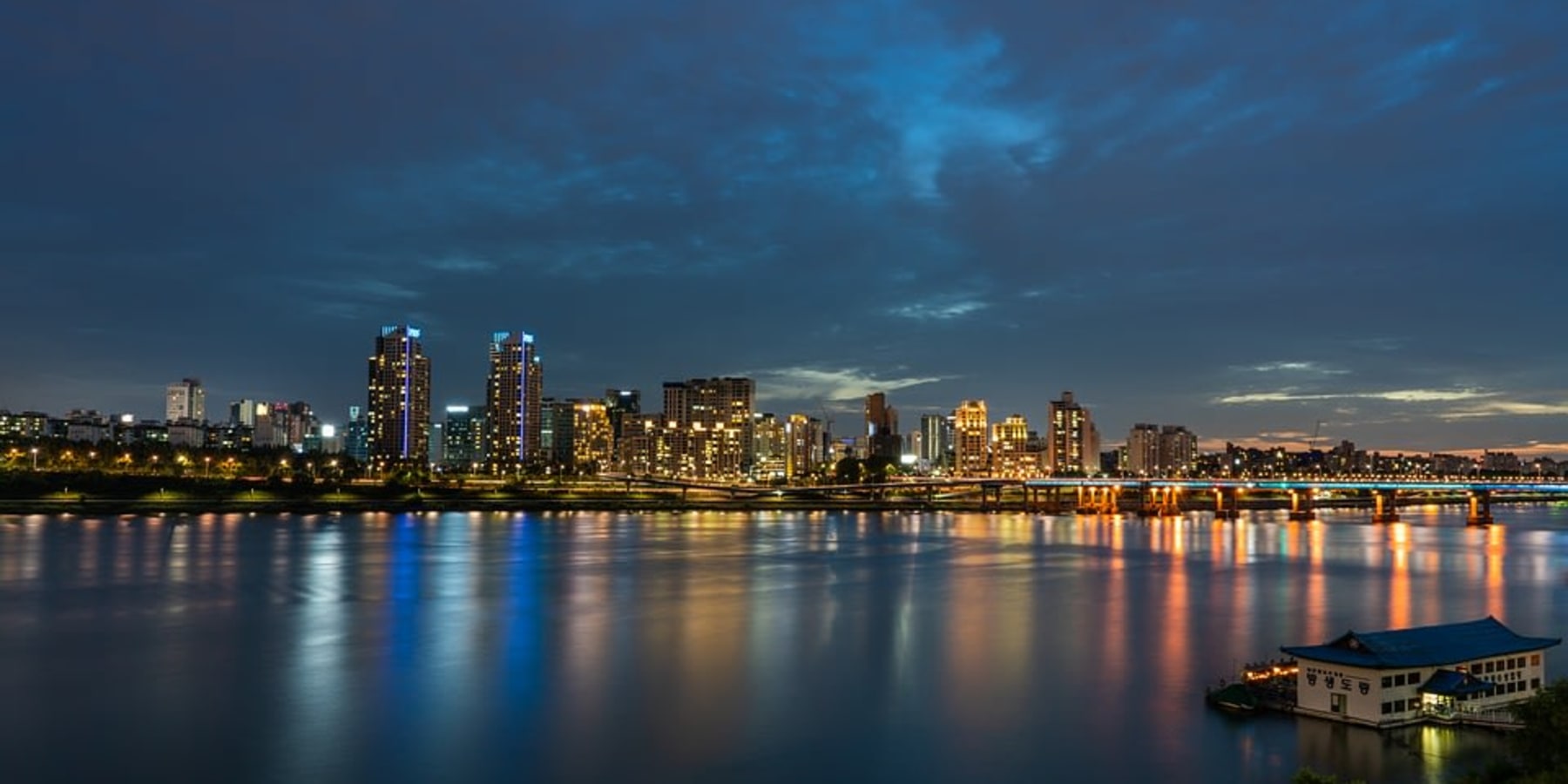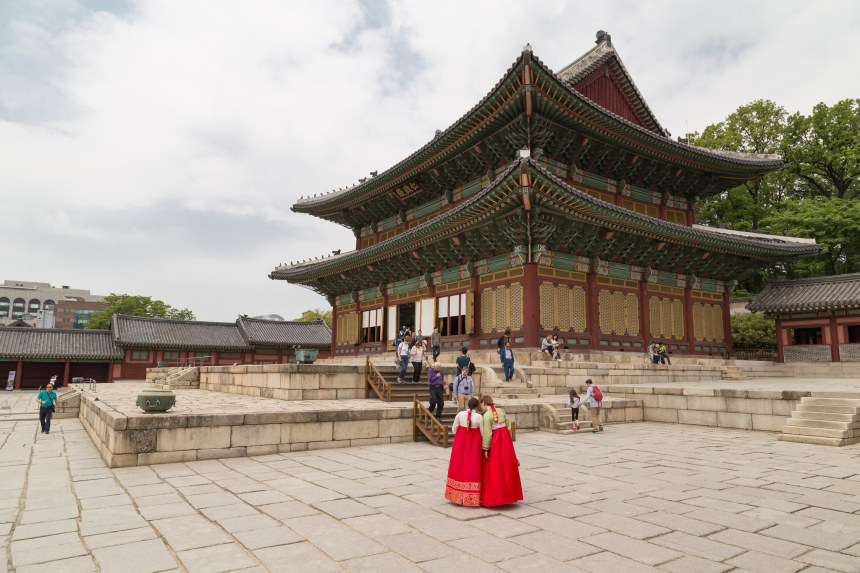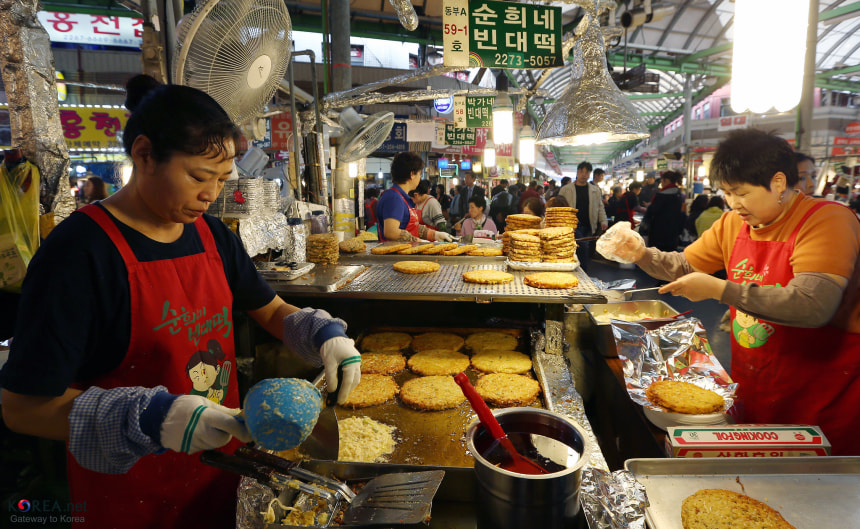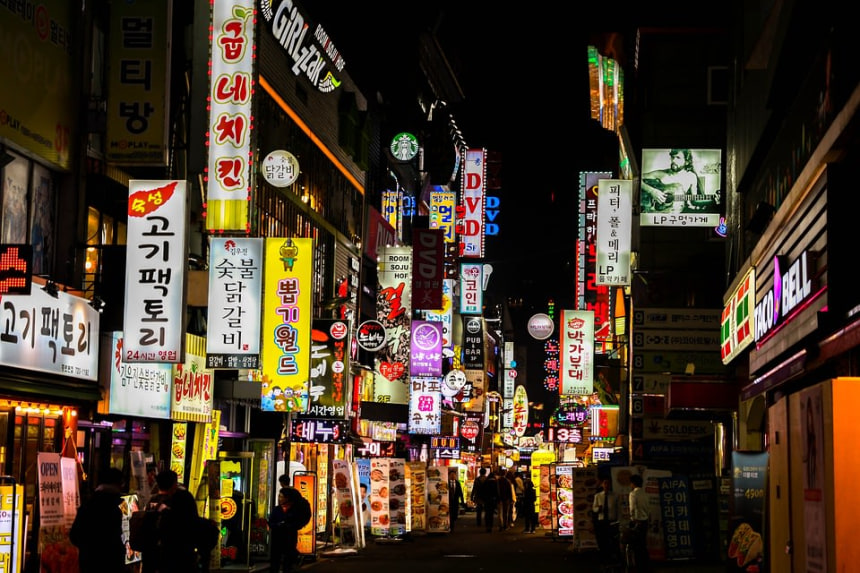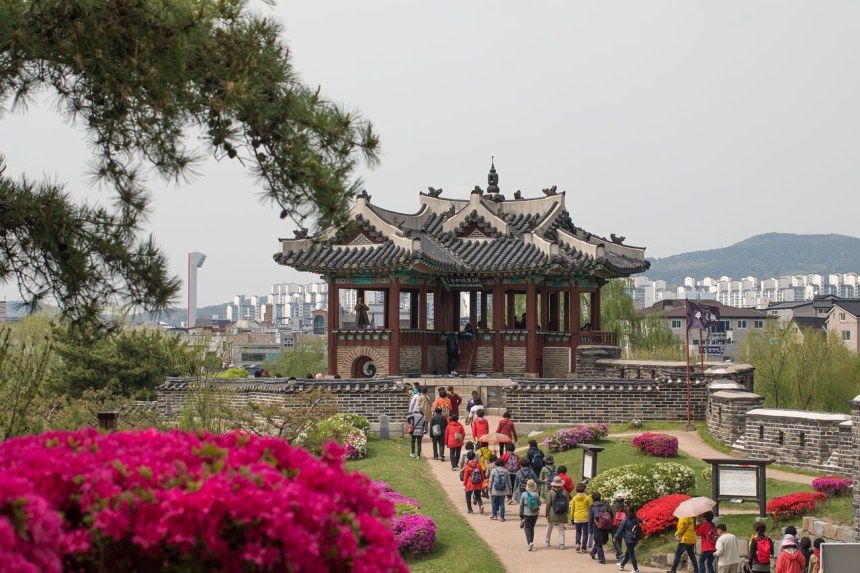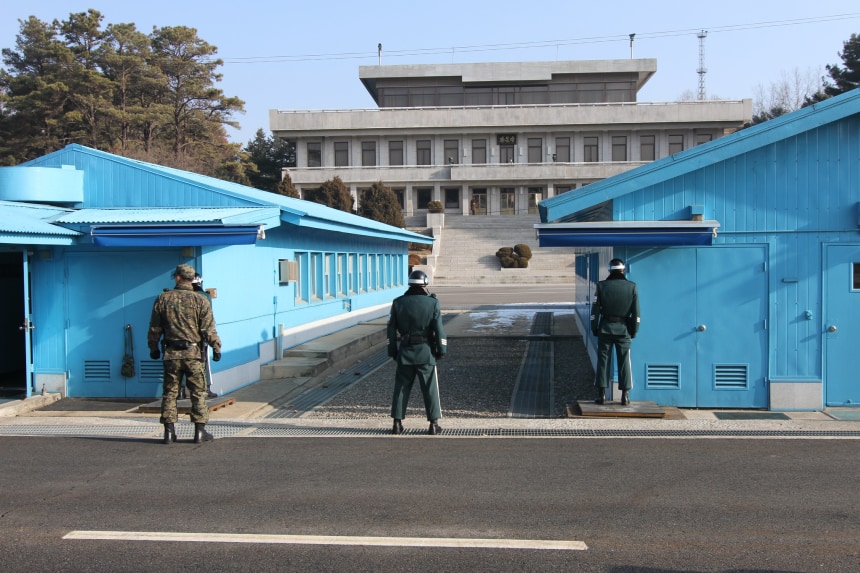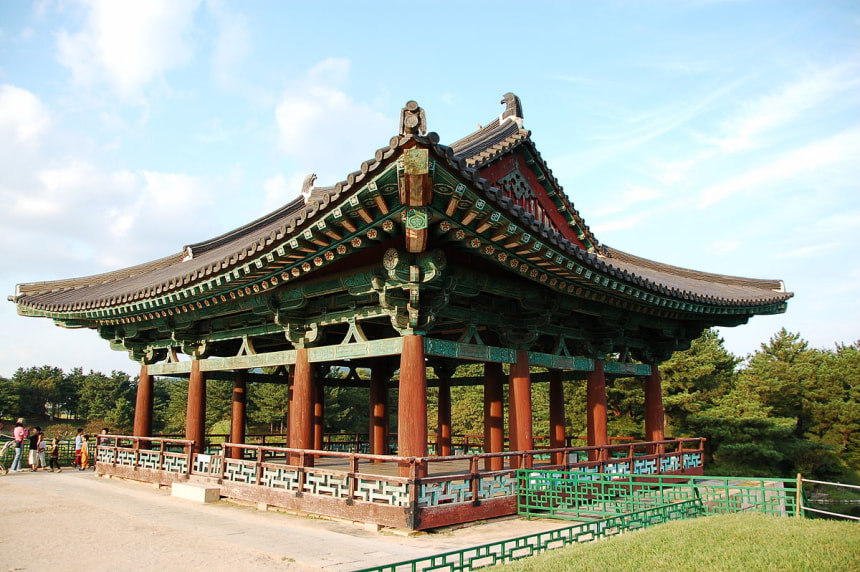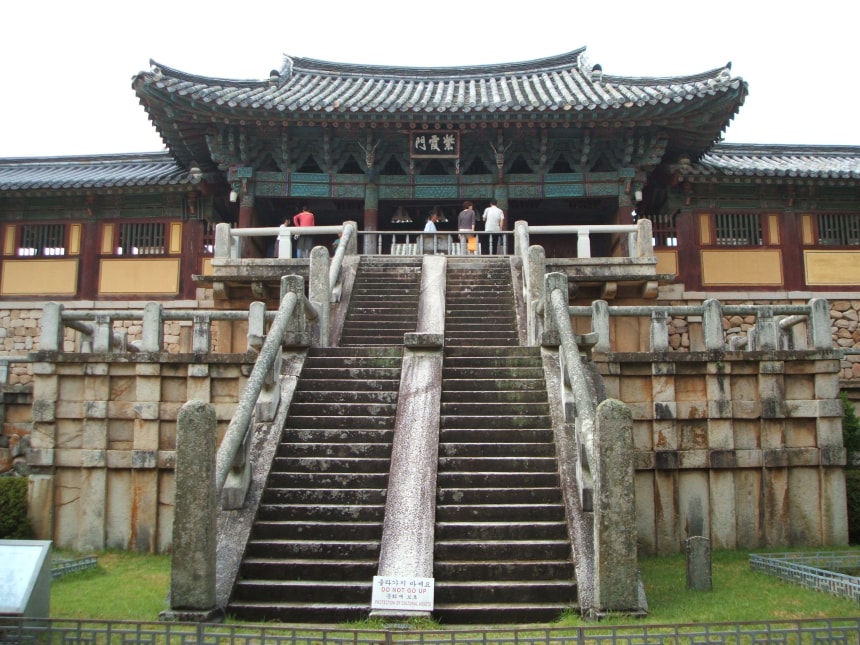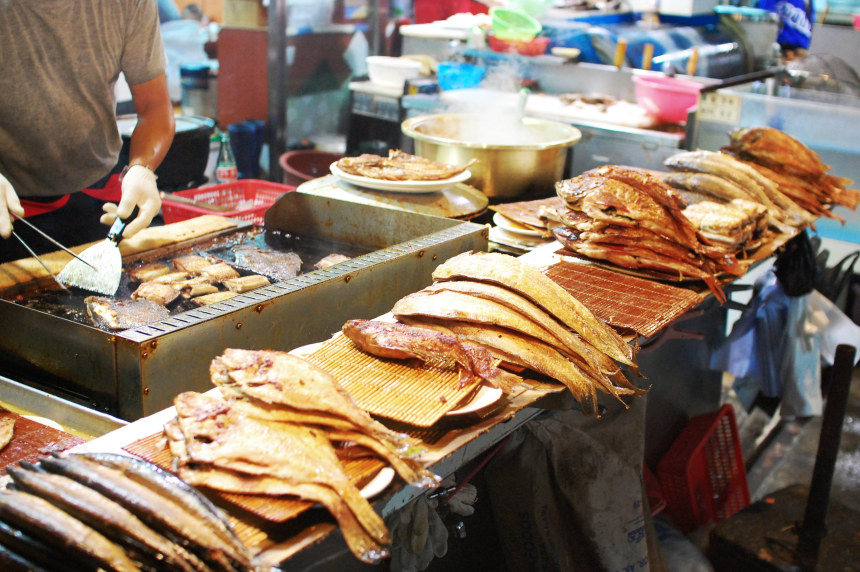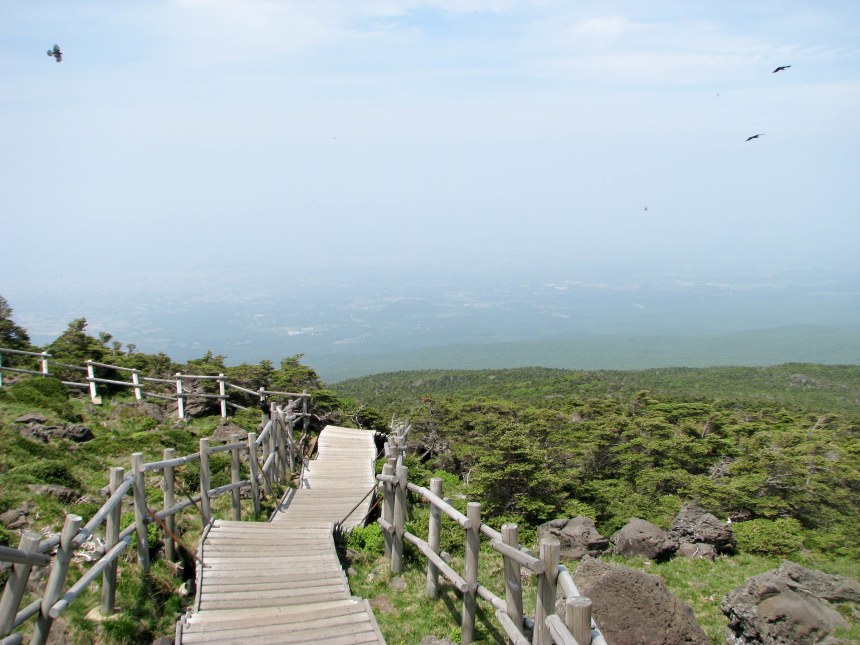| 10 mins read
Ross Cameron
While exploring South Korea in 10 days may sound like a daunting challenge, it can be a surprisingly immersive way to experience this small East Asian country. Squeezed into the southern half of the Korean Peninsula, which it shares with its hermetic northern neighbour, South Korea is packed with must-see attractions in close proximity with one another – meaning there will be no long train journeys between destinations eating up your precious time.
There are two different ways to explore this country’s cultural riches in a small amount of time. On one hand, you could travel around the country moving onto a different destination most days. On the other, you can explore South Korea through day trips. The best way to do this is to base yourself in Seoul for the first five days (as most visitors arrive at South Korea via the capital) and then move onto a city in the country’s southern half for the end of your trip, such as Busan, and use these metropolises as jumping-off points to explore lesser-known hidden gems. This Korea travel guide, which will show you the highlights of the country’s southern and northern reaches, is compatible with both methods of exploring the country.
Day 1: See Korea’s ancient history at Changdeokgung Palace
No visit to South Korea could start anywhere else but Seoul and no visit to Seoul could start anywhere else but the UNESCO listed Changdeokgung Palace, the epicentre of the country’s rich history. Built-in the 15th century as a summer palace for the Joseon Dynasty, who ruled the Korean Peninsula from 1392 to 1897, the tranquil palace became their primary residence following the destruction of Gyeongbokgung Palace by Japanese invaders the following century. To explore the sprawling palace complex you must engage a tour guide. When taking in its awesome size and picturesque landscaped gardens, make sure to note the Donhwamun, a monumental 17th-century entrance to the palace, the Injeongjeon, which was once the residence of Korea’s imperial family, and the wooden Nakseonjae, where descendants of the dethroned imperial family lived until the late-20th century.
Day 2: Get a taste for South Korea’s gastronomic culture at Gwangjang Market and Gangnam
Once you have immersed yourself in the country’s rich ancient past, get a taste for its modern food and drink culture at Gwangjang Market and Gangnam. During the day, head to the market, which is known as the city’s busiest meokjagolmok (food alley). Packed with atmospheric food stalls and punchy aromas, this is the best place to taste the legendary cuisine of South Korea. Make sure to try kimchi (spicy fermented cabbage – the country’s national dish), bibimbap (a porridge-like rice dish served with pickled vegetables and meats) and nokdu bindaetteok (crispy mung bean pancakes). Adventurous diners can also try sannakji – an unnerving dish of still moving octopus tentacles. Once you taste South Korea’s culinary delights, make your way to the legendary nightlife hub of Gangnam, immortalised by Psy’s ‘Gangnam Style’. A little known fact about South Koreans is that they party more than any other people on earth, so make sure to have a few glasses of soju (rice wine) to get ready for a long night of dancing to K-Pop classics.
Day 3: Take in the sights of Suwon
Although a separate city of well over 1 million inhabitants, Suwon is part of the greater Seoul transportation system and makes a great day trip from the capital city. The main attraction in this historic city is the gargantuan Hwaseong Fortress, whose towering walls snake around the city centre for nearly 6 kilometres. This (literally) unmissable attraction was built in 1796 in anticipation of the imperial capital being moved from Seoul to Suwon, something that never actually materialised. Beyond Hwaseong, Suwon is best known for its enchanting Folk Village that transports visitors back to the era of the Joseon Dynasty. Guides wearing hanbok (traditional Korean clothing) guide you round this picture-perfect assortment of ornately tiled buildings and thatched farm cottages that illustrate how South Koreans would have lived during the 17th century.
Day 4: Explore the world’s most militarized border at the DMZ
The Demilitarized Zone (DMZ) that separates North and South Korea is the world’s most heavily fortified border: from coast to coast the Korean Peninsula is divided by 240 kilometres of barbed wire, minefields, electric fences and watchtowers. The legacy of the Korean War, which was never formally concluded but instead ended in an armistice, the DMZ is also, bizarrely, one of South Korea’s biggest tourist attractions. Most visitors to the DMZ head for the village of Panmunjeom, otherwise known as the Joint Security Area, which straddles the borders of South and North Korea and is where the 1953 truce was completed. When visiting this location, the tension in the air is palpable as soldiers from the two Korea’s face off and you will be able to climb a UN operated watchtower to see into South Korea’s sealed off northern neighbour.
Day 5: Soak up the traditional culture in Andong
Located midway down South Korea is the picture-perfect city of Andong, whose streets are lined with thatched houses, temples and distilleries producing some of the country’s finest soju. The highlight of this delightful destination is the Hahoe Folk Village, a UNESCO listed heritage site that is still home to around 250 descendants of the Ryu clan. With its cobbled streets lined with traditional Korean houses, locals wearing hanbok and museums dedicated to the regional practice of mask carving, the Folk Village offers unrivalled insight into South Korean culture. Beyond this, Andong is famed for its soju, which can reach a dizzying 45% alcohol per volume. To taste this exceedingly strong drink head to the Soju Museum where you can see the distilling process first hand and sample various varieties at the bar.
Day 6: Walk amongst history in Gyeongju
Although it is not one of South Korea’s biggest cities, Gyeongju, which was the capital of the ancient Silla Kingdom, deserves more than one day on any tour of the country due to its enchanting attractions and sheer historical significance. While a number of the city’s attractions are located towards the outskirts or in the surrounding mountains, your first day in the city is best spent exploring the mysterious Tumuli-gongwon and the cultural riches of the Gyeongju National Museum. The first of these is a large park in the city centre peppered with grassy knolls, which are in fact the tombs of ancient Silla kings who ruled during the 1st millennia AD. Making for one of South Korea’s most magical landscapes, the tombs, known as tumuli, were constructed to imitate the hills that surround the city. While only one tumulus is open to the public, to see the riches that were found within the head to the Gyeongju National Museum, which is considered by many South Korea’s finest museum and contains countless treasures that rival anything comparable discovered from early medieval Europe.
Day 7: Head to the hills to see Bulguk-sa and Seokguram
To get a sense of how advanced Silla culture was, head to the UNESCO listed Bulguk-sa and Seokguram complex set high in the mountains surrounding Gyeongju. Spread across a number of stone terraces and set amongst tranquil gardens, Bulguk-sa is a master-class in Buddhist architecture. Highlights of this otherworldly complex include the Daeungjeon Hall, which was rebuilt following Japanese destruction in 1765, and the stepped bridges, each step of which represents a step towards enlightenment
Sitting higher in the mountains is Seokguram, a vast cavern that contains a gigantic effigy of the Buddha alongside numerous statues representing lesser deities. While Seokguram’s artefacts are astonishing, the mountain top view is equally as impressive with commanding views of the East Sea.
Day 8: Onto Busan – South Korea’s beachside second city
Set against a backdrop of sub-tropical mountains and sparkling golden sand beaches, Busan can feel a world away from the rest of South Korea. This beachside city is a remarkable place and many of its attractions are connected to the sea, which has shaped the city of centuries. To begin your Busan experience, head for the Jagalchi Fish Market, which is packed with a phantasmagoria of deep-sea creatures. Noted for its pungent smell, the market sprawls along Busan’s seafront and is the city’s number one attraction. For seafood, aficionados make sure to purchase your favourite fish and take it to one of the street food stalls to have it cooked to perfection. Beyond Jagalchi, a highlight of Busan is Gamcheon – a colourful hillside neighbourhood that has become the city’s cultural quarter. Packed with pastel-coloured buildings, the area’s streets are home to hip cafes, stunning street and contemporary art and buzzing bars that will show you the best of South Korea’s cutting edge cool.
Day 9: Take the ferry to Jeju-do and explore Jeju-si’s traumatic past
Busan is the perfect jumping-off point for taking a ferry to the near-tropical island of Jeju-do. While the island has for decades been the holiday destination of choice for South Koreans, only now is it gaining wider recognition internationally thanks to its dramatic scenery. The ferry from Busan to Jeju-do takes around 10 hours and arrives into Jeju-si, the island’s largest city. Once you arrive you will not have time to do much other than explore this port city, which is South Korea’s most southern metropolis. The city’s most thought-provoking attraction is the April 3rd Peace Park, which commemorates one of the Korean Wars most brutal moments. Following the agreement between the Soviet Union and the Americans to divide the Korean Peninsula, furious residents of Jeju led by the island’s left-wing Worker’s Party revolted and were massacred by the South’s new government in their thousands. The haunting Peace Park commemorates the failed uprising, which saw as many as 100,000 people killed.
Day 10: Hike in Hallasan National Park
Beyond Jeju-si lies the UNESCO listed Hallasan National Park, which is named after South Korea’s highest peak, Halla-san. To get the best vistas of this peak, which towers 2000 metres above the surrounding forests of rare Korean fir trees, take one of the national parks many hiking trails that snake around its slopes. For those visitors looking for something a little more adventurous, climbing up Halla-san takes around four hours and can easily be completed in the day. Once at the top you are provided with breath-taking views of Jeju-do and towards the picturesque southern city of Seogwipo. Indeed, there is no better way to cap a trip to South Korea than climbing its most iconic mountain.
“Over the past decade, Ross Cameron has travelled extensively across Europe, Southeast Asia, North America, North Africa, and the post-Soviet space. As someone who has a real passion for these regions of the globe, he is able to offer an expert opinion that highlights the best off the beaten track destinations.”
Image details and licenses: Changdeokgung Palace - https://www.flickr.com/photos/laurienevay/27693302691 (Laurie Nevay, CC By 2.0), Gwangjang Market - https://www.flickr.com/photos/koreanet/13885110035 (Republic of Korea, CC By 2.0), the demilitarized zone (dmz) https://www.flickr.com/photos/unc-cfc-usfk/12065341974/ (UNC CFC USFK, CC BY 2.0), Andong - https://commons.wikimedia.org/wiki/File:Korea-Summer_in_Andong-Hanok-01.jpg (Robert at Picasa, CC by 3.0), Gyeongju - https://commons.wikimedia.org/wiki/File:Anapji_Pond-Gyeongju-Korea-2006-07.jpg (riNux from Taipei, CC BY SA 2.0), Bulguk-sa - https://commons.wikimedia.org/wiki/File:Baegungyo_Bulguksa.JPG (Kewp, CC by 3.0), Busan - https://commons.wikimedia.org/wiki/File:Korea-Busan-Busan_Tower-01.jpg (By Iwy, CC By 2.0), Jagalchi Fish market: https://flic.kr/p/7EPdVy (Justin De La Ornellas, CC BY-NC 2.0), Hallasan National Park: https://flic.kr/p/cbX6j3 (Eduardo M.C., CC BY-NC-ND 2.0)

